A Customer Profile is a summary or collection of information such as interests, demographic characteristics, pain points, and buying patterns of a customer, which is used to devise sales and marketing campaigns/strategies that target similar customers.
These profiles are created by surveying existing customers. The customers are placed under different categories called market segments, which are based on common interests. Marketers then create marketing and advertising strategies directed to customers in each market segment separately to increase the success rates of the marketing strategies and adverts.
Business-to-consumer (B2C) customer profiles differ from business-to-business (B2B) profiles. B2B profiles define customers based on firmographics: company size (market share), industry, location, and revenue.
On the other hand, a buyer’s persona is a detailed description of the ideal (fictional) target customer, which is based on market research, existing data on current customers, and several educated assumptions. Like the profile of customers, a buyer’s persona shows the demographic data, buying patterns, interests, and pain points. However, the Buyer’s persona is best defined using the attributes of an ideal customer.
Free Templates
Companies should consider using customer profile templates when creating customer profile. Templates are readily accessible on the internet, and they are easy to use. We have provided free templates companies can download and personalize depending on the attributes of their customer base. The templates have all the elements that should appear in standard profiles, thus streamlining the writing process.
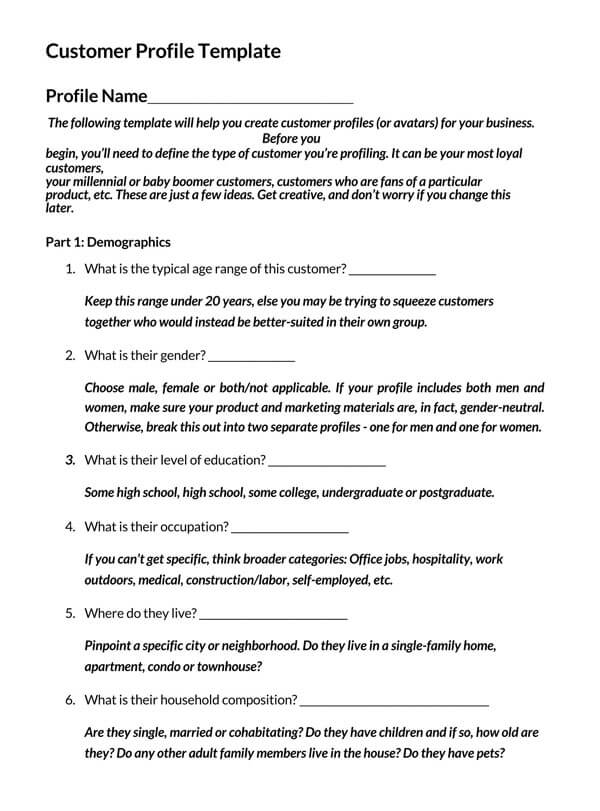
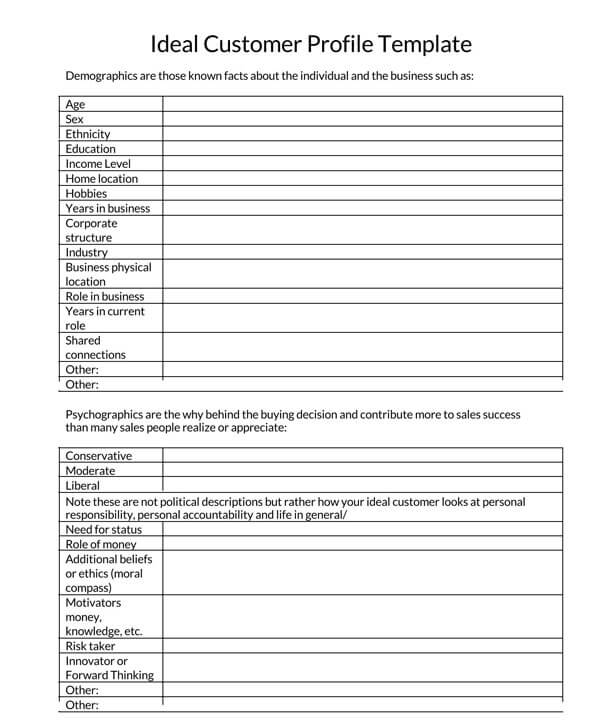
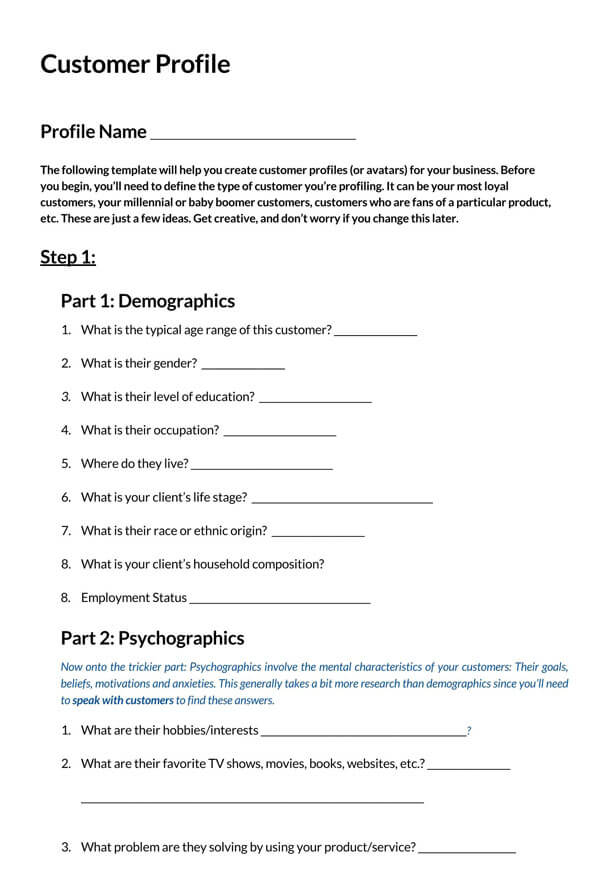
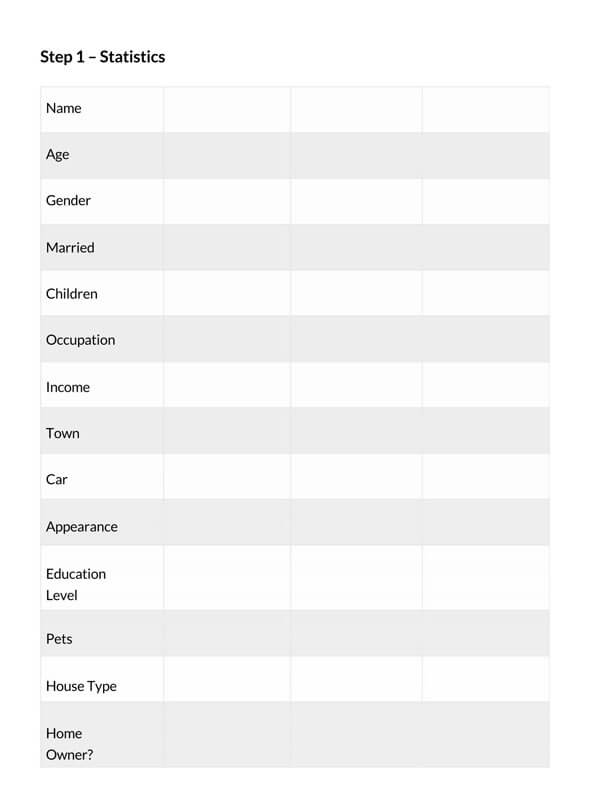
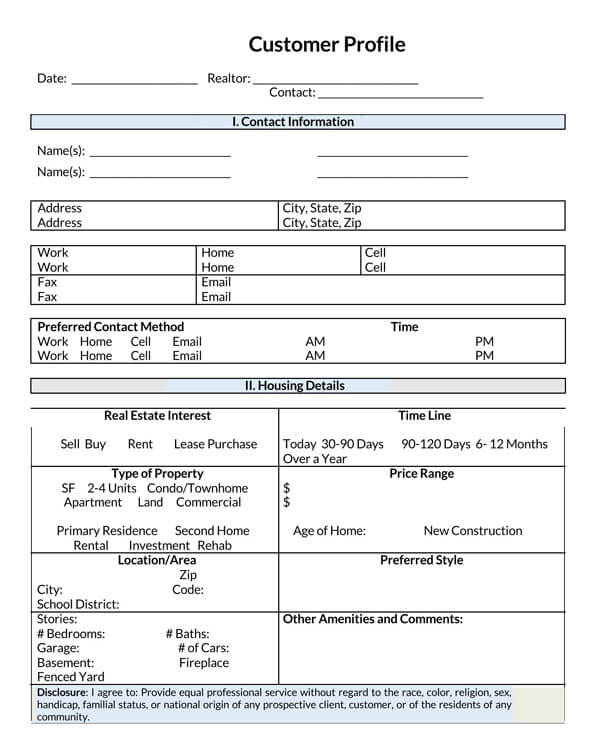
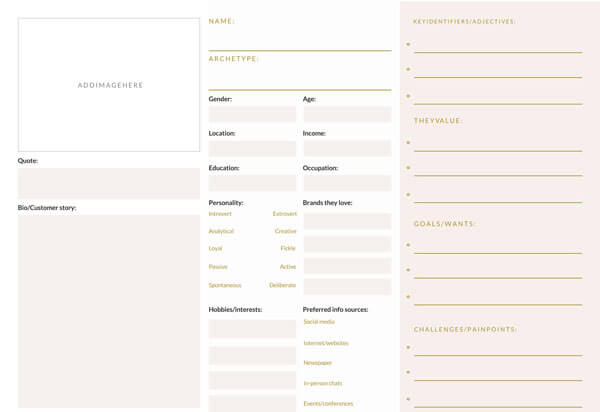
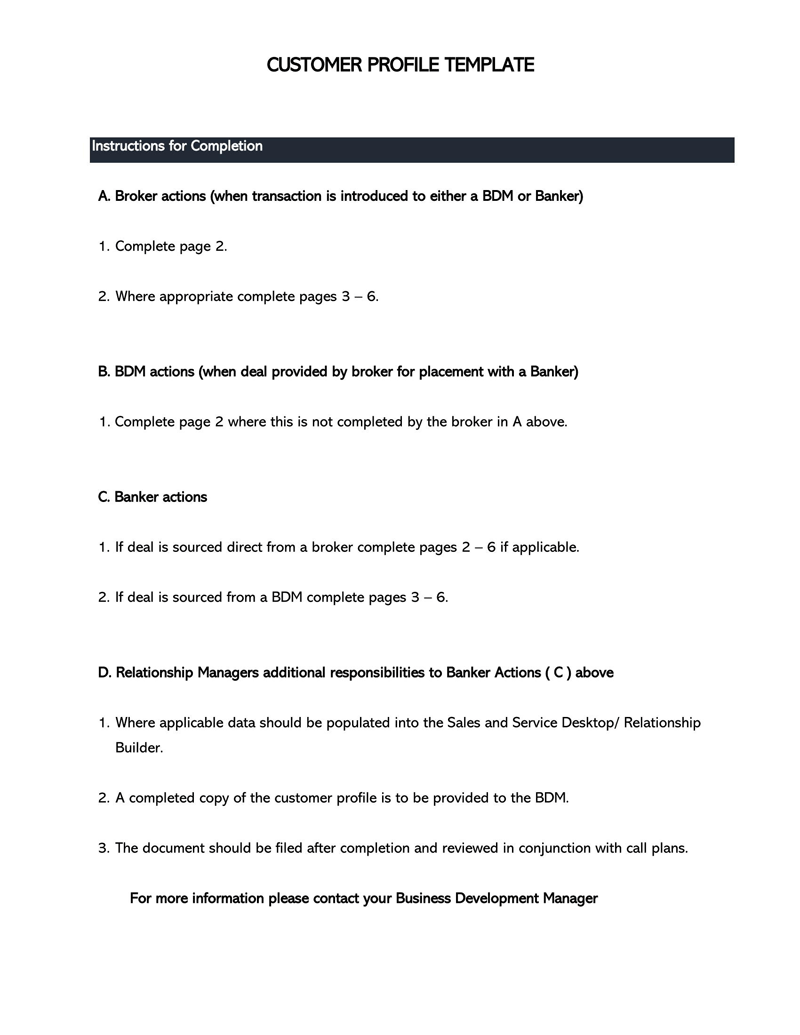
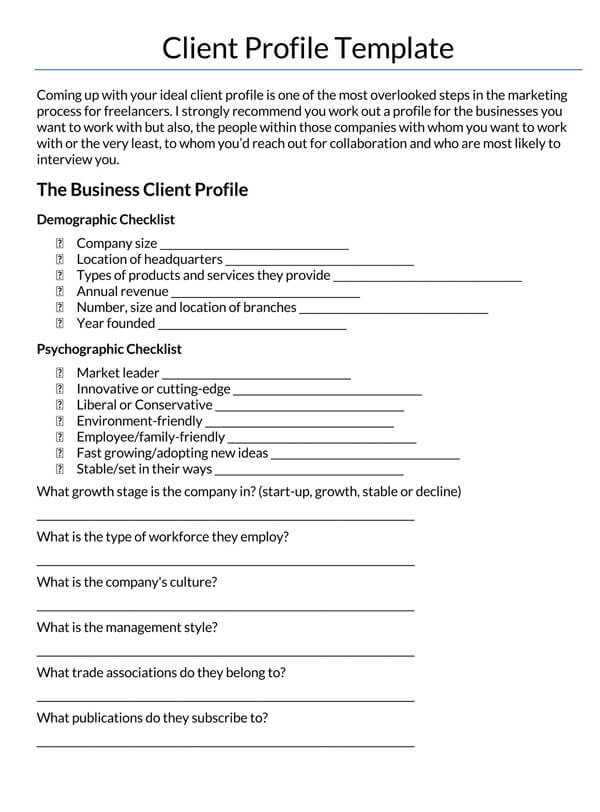
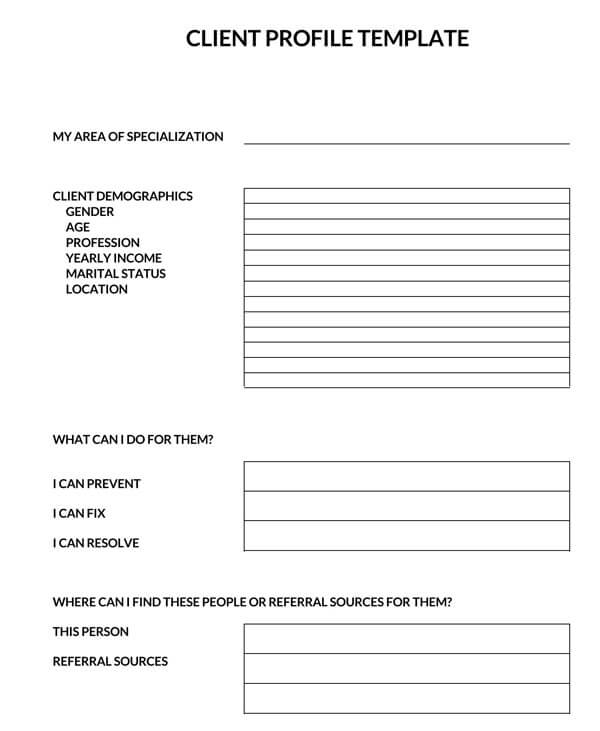
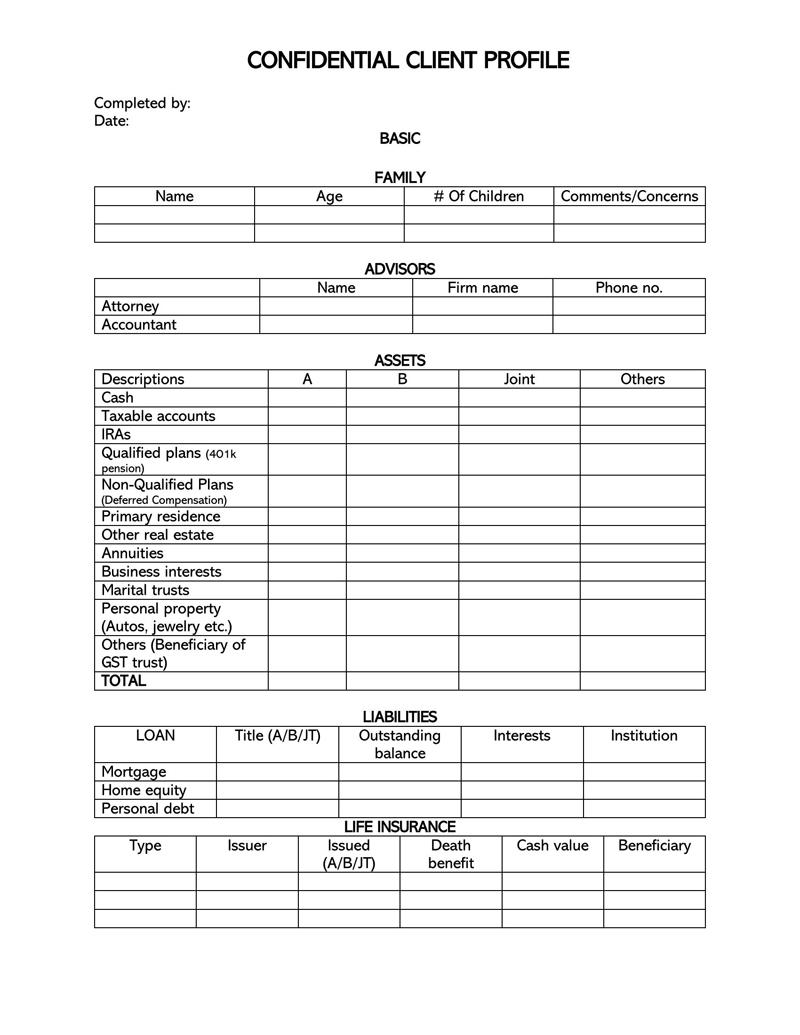

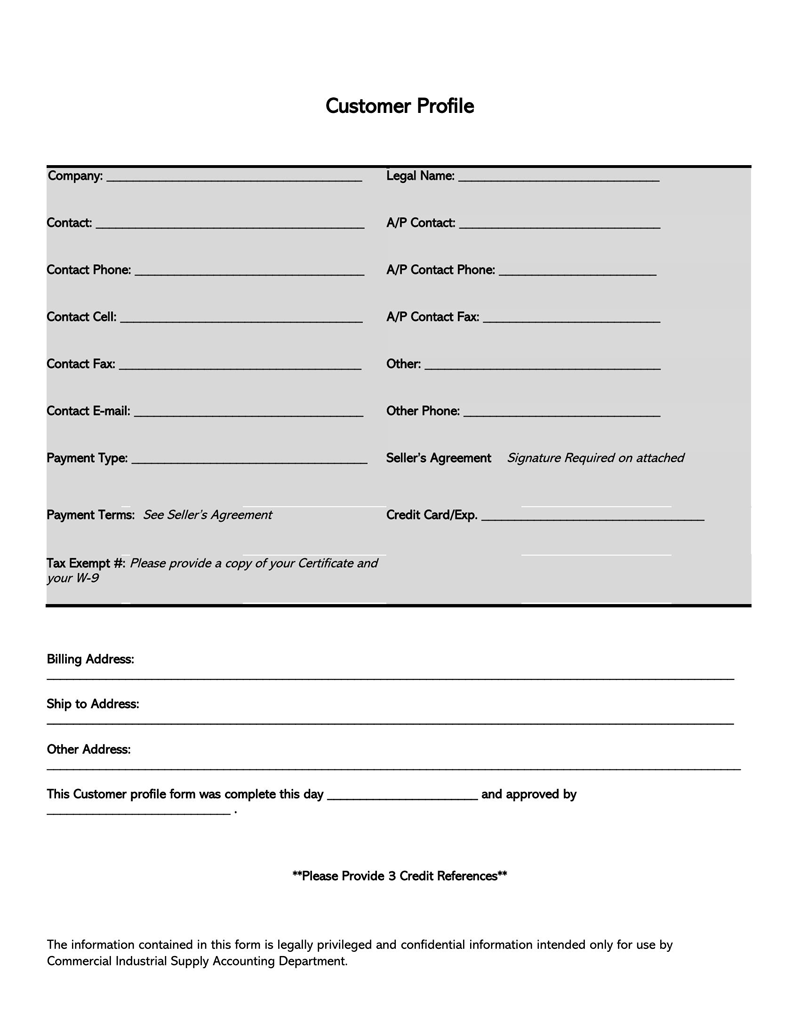
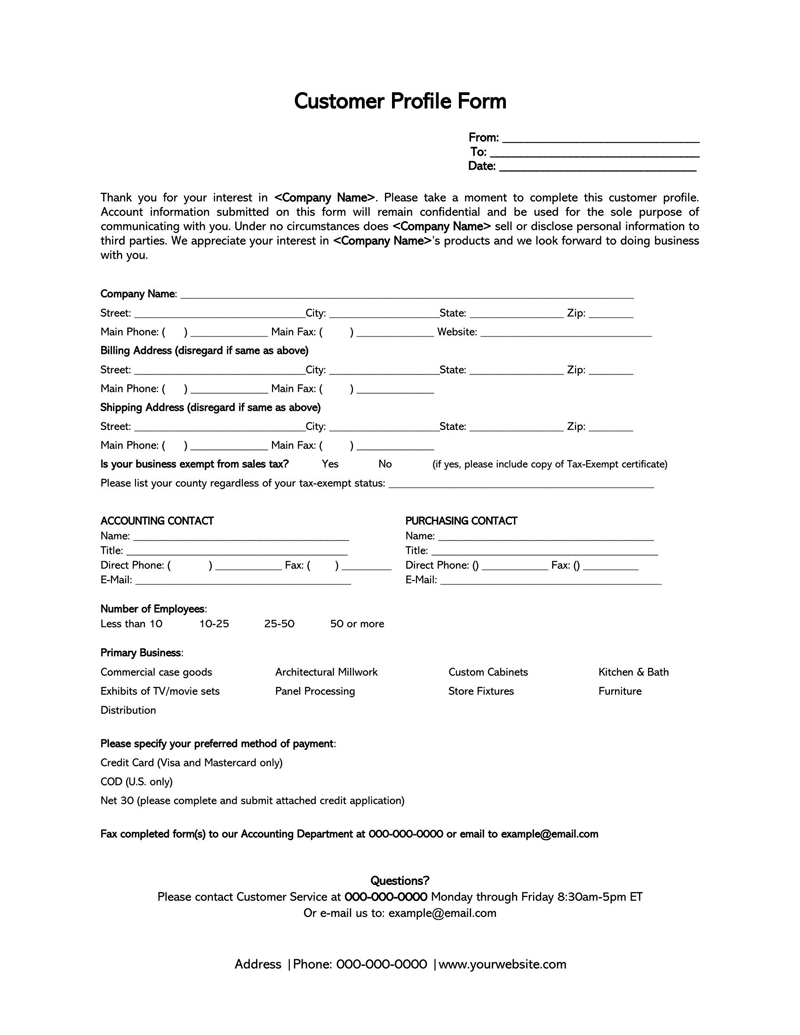
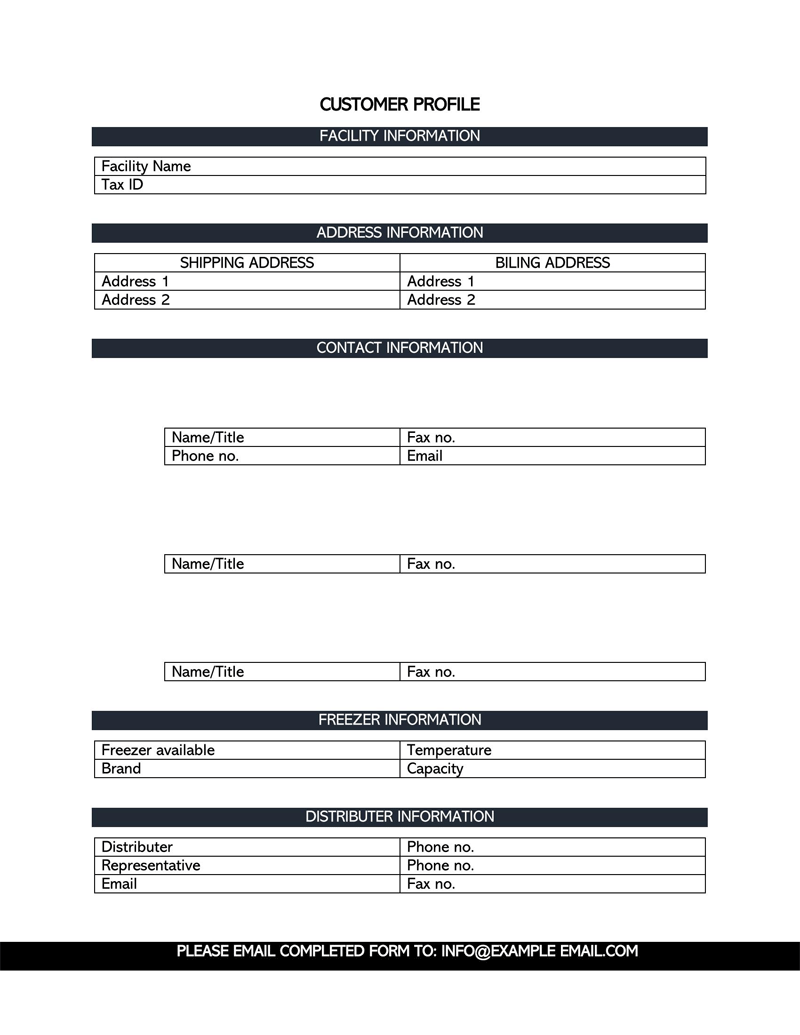
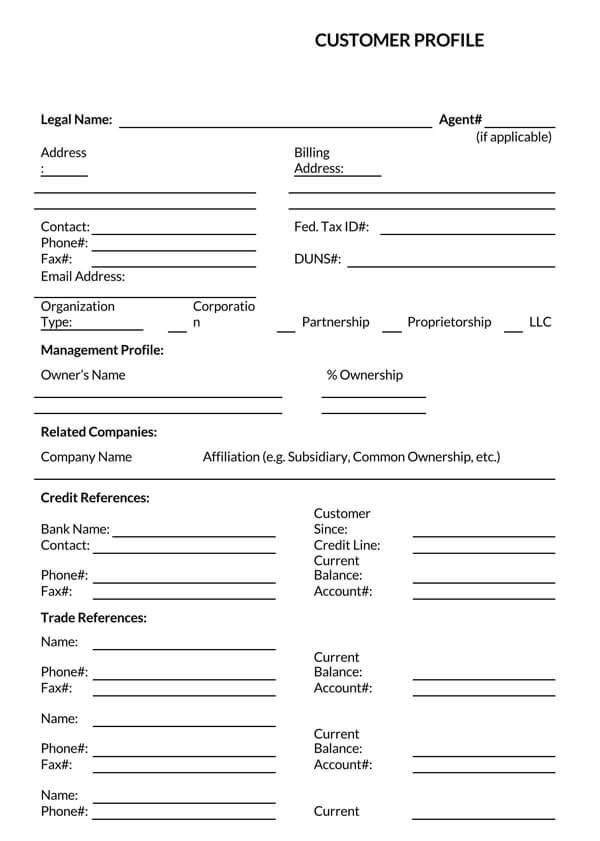
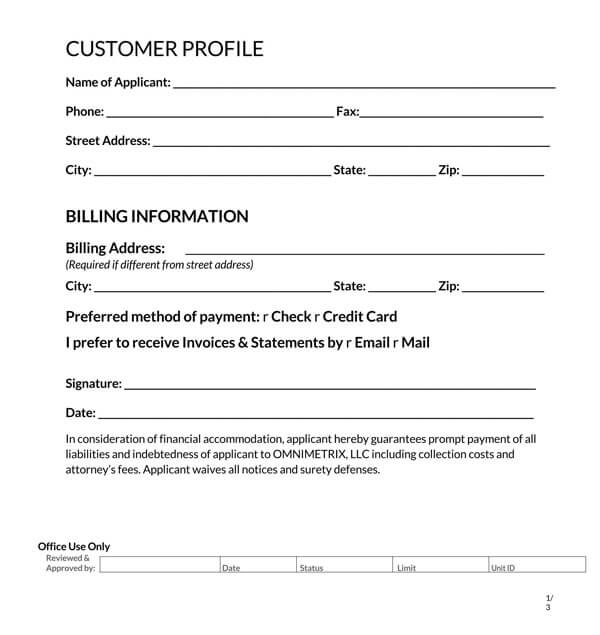
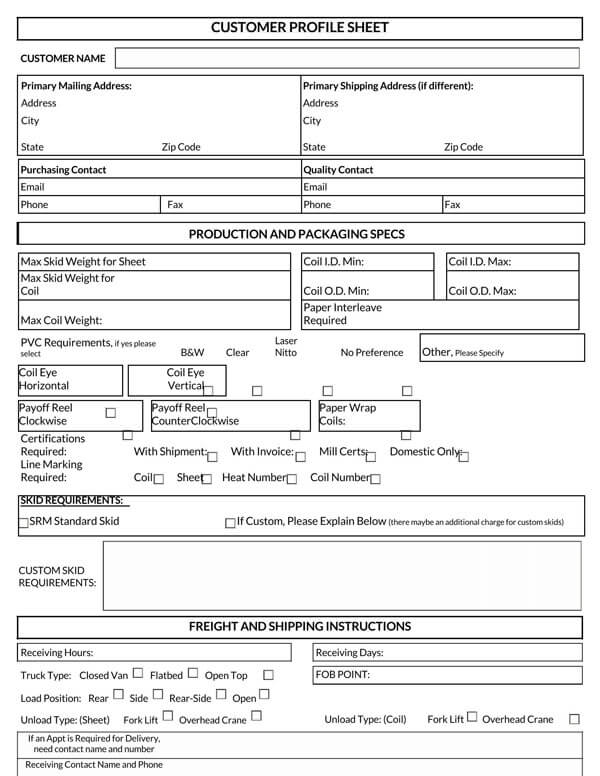
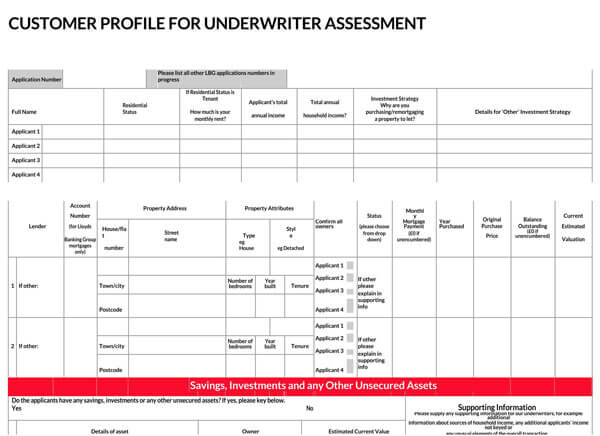
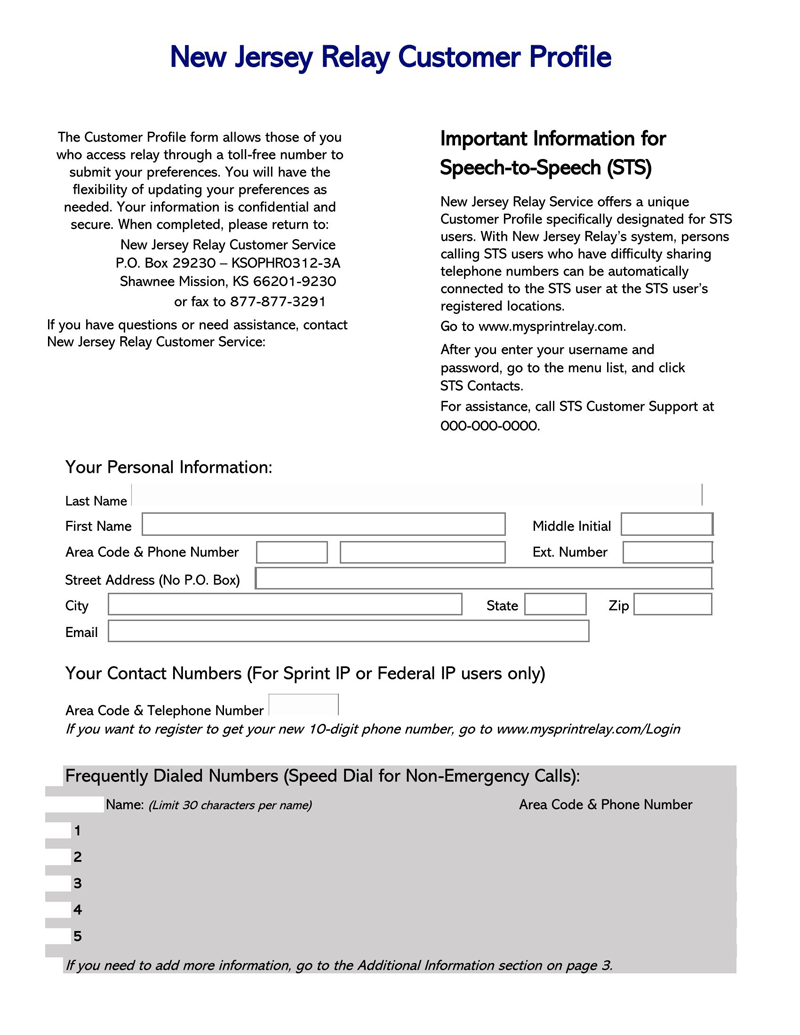
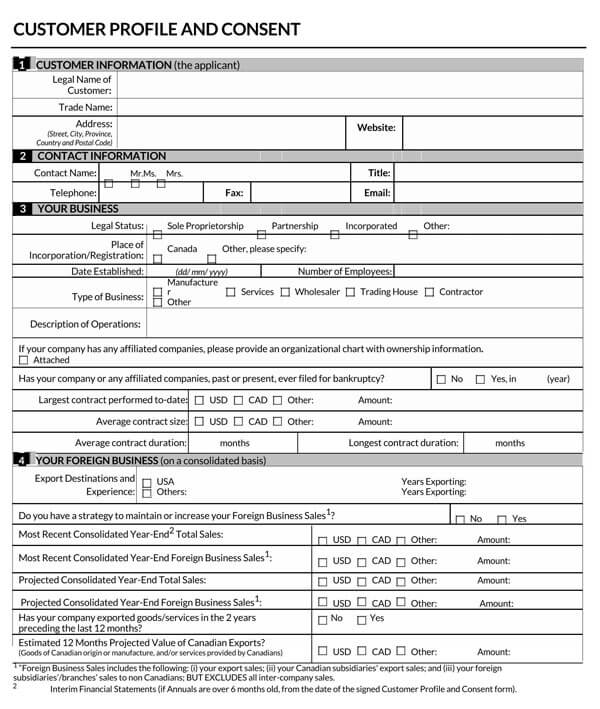
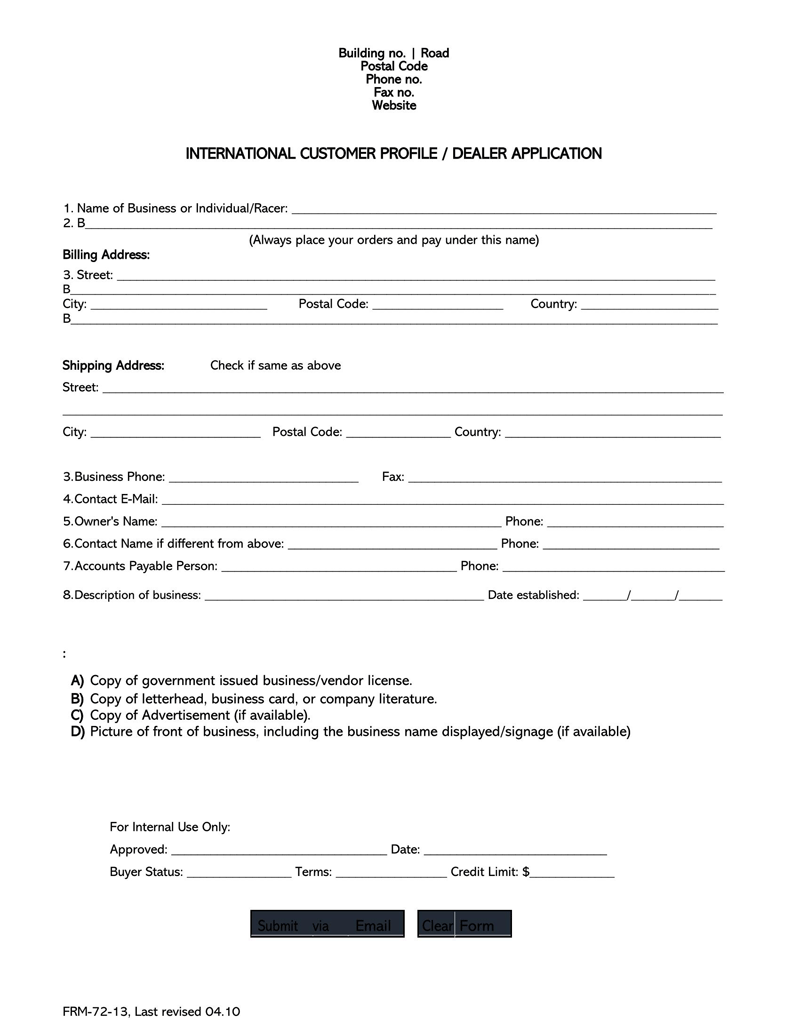
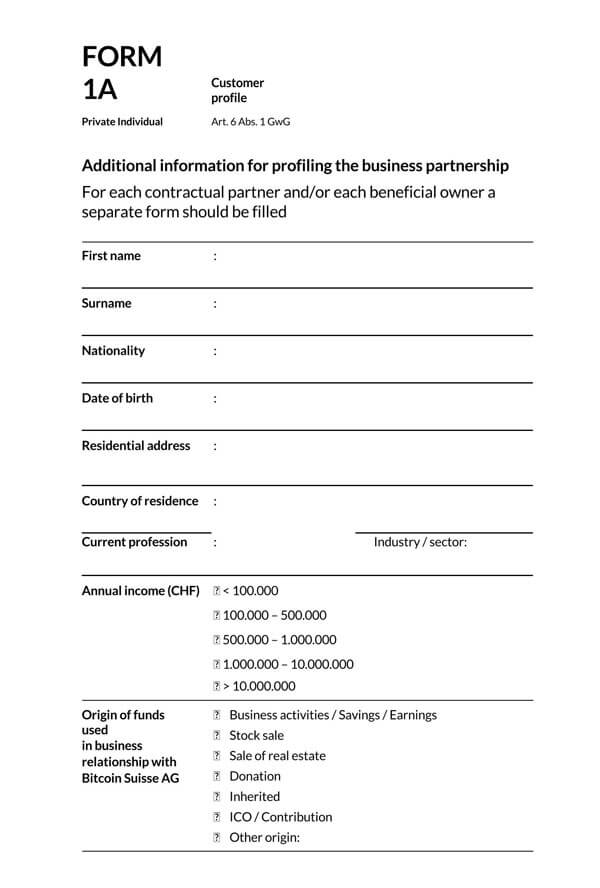

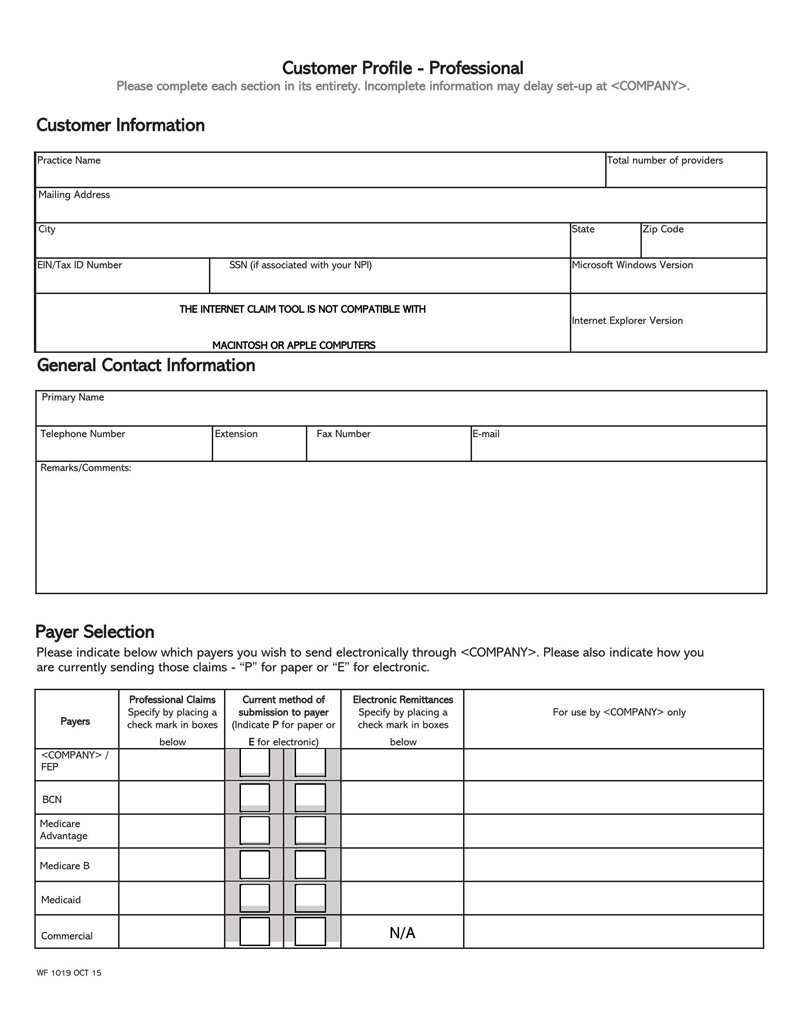
How Consumer Profiles Are Used
By creating customer profiles, an organization can group (market segments) its wide range of customers with shared profiles, and the organization can then determine which product(s) the specific category of customers would be interested in. This way, the organization can then devise marketing strategies specifically targeting a specific category based on their profile. A consumer profile helps the organization to understand who, where, what, and how to sell to potential customers.
EXAMPLE
- What motivates the customers to find the company and its products
- What are the benefits they get from the products and services?
- Where are the customers most likely to interact and engage with any of the company’s adverts?
- Which communication avenue is most convenient for them?
Importance Customer Profiling
Customer profiling is the process of constructing an outline or defining a customer (existing and potential customer) based on demographics, buying patterns, psychographics, interests, pain points, and other characteristics.
It is important in creating high-quality adverts that translate to sales in a business. This way, a company doesn’t spend so many resources in marketing and advertising without getting a return on their investment.
By determining target audiences, customer profiling gives the sales team direction by creating a picture of who is more likely to buy a certain product depending on who bought the same product in the past.
Customer profiling reduces the scope of marketing strategies by focusing on specific market segments rather than the public. It is easier to address the issues of a specific group of people over a large group of people.
Customer profiles are used as part of R&D (research and development) when a company intends to develop a new product. By understanding the different interests of different market segments, a company can diversify production to cater to the needs of more than one market segment.
Advantages of Customer Profile
Creating customer profile has been proven to benefit businesses in more than one way. This article will delve into the different advantages that come with customer profiling.
They include:
Identify better-fit prospects
Customer profiles help an organization in targeting relevant audiences by determining better-fit prospects for its products or services. Better-fit prospects translate to happier customers and increase close rates of the marketing team. Marketing efforts can be curated (personalized) to focus on a specific market segment.
Lowers customer acquisition cost
By narrowing the target audience, customer profiling lowers the customer acquisition cost (CAC). CAC is the amount of money and resources a company spends on marketing efforts to attract a single customer. This cost is lowered since only marketing efforts that address a specific market segment are undertaken.
Serve customers better
Businesses that use customer profile have been noted to offer better customer service experiences to their customers, for they are aware of the customer’s interest, pain points, and characteristics. The company’s products and services can be aligned to address the customer’s needs beforehand, which in turn creates a loyal customer base.
Reduces customer churn
Offering services based on customer services has been noted to reduce customer churn – the loss of customers over a specified period. As mentioned above, these profiles can be used to increase interest in products and loyalty among customers; this ensures new and existing customers continue coming back – customer retention.
Improved account-based marketing
For businesses that use an account-based marketing (AMB) strategy, customer profiles can help to personalize communication/engagement with each individual customer. This is more advantageous to businesses with large clientele as it would be difficult to learn about each individual client, but by categorizing them into market segments, the company can focus on the segment’s pain points.
You can quickly qualify new targets
Among the multitude of potential clients, the marketing team will reach, customer profiling can help turn that potential into actual purchases by prioritizing customers that fit typical profiles. This fastens the process of converting potential customers to buying customers.
Types of Customer Profile
The previously mentioned market segments represent the different types of customer profiles. These segments focus on specific characteristics that can separate the overall clientele of a business into more condensed groups that help the company understand its customers further.
The types are;
Demographic
A demographic profile categorizes customers based on age, gender, level of education, occupation, household composition, ethnic and any other demographic characteristics.
Psychographic
A psychographic profile lists the hobbies/interests, personality, lifestyle, attitudes, opinions, favorite TV shows, voting behavior, pains, values, and goals in order to group customers. These factors are known to influence consumer decisions and the purchase journey of customers.
Behavioral
A behavioral profile focuses on the customers’ actions. Characteristics used to define a behavioral profile are customer engagement, purchasing history, product usage/band affinity, readiness to buy, loyalty or account age, satisfaction, and attention required. This profile can look into methods of engagement preferred by customers, such as TV, radio, social media, email, etc., and response to incentives such as coupons/discounts.
Geographic
Customers can be profiled based on the geographical area where they reside and work. Location can influence the demand for products and services.
Socioeconomic
Socioeconomic is a characteristic related to the social and economic factors of the customers. Such factors include neighborhood, occupation, household description (income and composition), and urbanization. These factors will influence customers’ preferences and purchasing ability. Consequently, they can be used to create a profile of customers.
Generation
Customer profiling can be based on the interest and preferences of a generation. For instance,priorities tend to change from one generation to the other.
Geo-demographics
Geo-demographics is a combination of geographical attributes with demographic traits.
Benefits
Customers can be profiled based on the benefits each customer gains from a specific product or service. It is not rare to find that a single product can have varying benefits to different consumers.
Brand affinity/usage
A brand affinity profile categorizes customers based on the buying history, brand engagement, and brand loyalty. Some customers are inclined to one brand out of numerous brands of the same product.
Segmentation Systems for Creating Consumer Profile
When creating these profiles, different techniques can be used to segment profiles. These systems are used by market research firms but can also be adopted by companies intending to do the classification themselves.
These techniques are as follows;
ABC1
ABC1 is the most common technique used to segment customer profile. This technique takes into consideration the professional occupation, the level of dependability of the customer in terms of contribution in his or her household, and the designated role of the customer in his or her household.
The term ABC1 represents the following socioeconomic groups:
A – Represents a higher or senior managerial, administrative or professional role.
B – Represents an intermediate managerial, administrative or professional level.
C1 – Represents a supervisory, clerical, and junior managerial, administrative, or professional role.
C2 – Categories skilled manual workers
D – It represents semiskilled and unskilled manual workers
E – This category groups all individuals entirely dependent on public or government assistance, such as the elderly, unemployed, chronically ill, disabled, etc.
Under the ABC1 technique, life stage and other special groups are categorized as follows based on consumer research and census-based research:
- Pre-family or no family – Individuals younger than 45 who are not parents.
- Family – Any age with at least one child below the age of 16 and lives at home.
- Third age – Individuals aged between 45-64 and have no children aged below 16 at home.
- Retired – Individuals aged 65 having no children aged below 16 at home.
ACORN
ACORN is an abbreviation for A Classification Of residential neighborhoods. ACORN is a geodemographic (combination of geographic and demographic attributes) classification used in the UK. This technique takes into consideration census data of residential areas to classify customers because residents in the same neighborhood often have common traits such as income, education, and other traits. These segments are then assigned respective postal codes to identify the profile.
MOSAIC
MOSAIC is a technique adopted by 29 countries in the world that segments customer profiles based on characteristics of 10 classifications of residential neighborhoods that can be found in cities within those 29 countries. MOSAIC has segmented more than 400 million households in these countries. United States, Western Europe, Australia, and Eastern Asia are users of the MOSAIC technique.
ESRI Community Tapestry is another technique used to categorize households in the US into life Modes. There are 14 life Modes under this system.
They include:
- Family Landscapes, GenXurban, Cozy Country Living
- Affluent Estates, Upscale Avenues, Uptown Individuals
- Rustic Outposts, Midtown Singles, Hometown
- Ethnic Enclaves, Middle Ground, Senior Styles
- Next Wave, Scholars, and Patriots, Unclassified
CAMEO
CAMEO classification technique categorizes customers within the country and the entire globe in consideration.
EXAMPLE
CAMEO US is for households in the US, CAMEO International cuts across borders, and CAMEO Global classifies customers across 40 countries in Western and Eastern Europe, Africa, America, and the Asia Pacific region.
PSYTE HD
PSYTE HD is a segmentation technique used in Canada that bases its market segments on geodemographics, specifically lifestyle and neighbourhood. There are 50 market segments under this system.
How to Create a Customer Profile
These profiles are entirely dependent on access to credible data. Informed assumptions are allowed, but they must be based on case studies or observations.
The following steps can be applied to convert market research data to customer profiles:
Focus on the problem
Firstly, concentrate on what are the problems that lead to customers buying products and services of the organization. Scrutinize the existing customer base and identify the problems they face and how the organization/business solves these problems for them. This step is solely dependent on the customers themselves; try to understand how and why the customers use the product or services the company produces. Regardless of the customer base, small for small businesses and huge for large businesses, it can be used to derive conclusive information about the existing problem which creates need or demand for products and services.
Identify your best customers
Next, identify the best customers of the company’s products and services. The best customers can be selected based on how long they’ve been loyal to the product or service, referrals they’ve made, and those used in company case studies meaning they value how the business/company is helping them. List at least 5-10 customers. The best customers represent the potential of the target audience of marketing efforts. Start-ups can define their best customers by determining who would get the most benefits from the company products and services since they are yet to establish a consistent customer base.
Review your customer journey map
A customer journey map outlines the stages at which a customer interacts with a company/business to satisfy their need. Going through customer journey maps helps in giving a clear image of the people buying a company’s products and interacting with its brand. If a customer journey map is unavailable, simply think of the steps (stops) involved in common journey steps or interview customers to determine the general journey map. By identifying the customer journey map, customer challenges can be identified and resolved, and the process from production to consumption can be optimized. Creating customer journey maps take time but can be crucial in understanding how customers interact with a company and its products.
Dig into demographics
Now that the interaction between customers and the company is established, it is time to define the attributes that can be used to define customer profiles. List all the demographics that fall under each profile.
EXAMPLE
Demographics are age groups that make up the largest portion of the customer base, i.e. teenagers, 25-35 years old males, etc.
Outline other attributes such as;
- Psychographics – Lifestyle attributes, interests/hobbies, pain point, concerns, etc
- Social economics – Attributes related to employment/income, neighborhood, education, etc
- Geographic segmentation – categorizes customers based on their location and other factors affected by geographics such as taxes, culture, climate, urbanization, population, etc.
- Firmographics – Used to create B2B profiles. Attributes such as company size, industry, revenue, etc., are considered.
Collect customer feedback
After the attributes of the customers based on available data have been outlined, hold face-to-face interviews with the customers to add on any information that was already available. Ask the interviewing team to look out for non-verbal cues such as body language or facial expressions to questions that provide insight on interests and dislikes. Other than a source of data, interviews are an opportunity to nurture company-client relations. Interviews can also be via phone calls or video calls. Will to hold these interviews can be used as an indication of customer loyalty, which is a factor to consider during customer profiling.
Examine contextual details
The next step is to determine the background information of the customers. Information to be gathered in this step includes their key pain points (biggest challenges), short-term goals, how they are currently addressing their problems, and the impacts of the pain points. Based on this information, the company can have a wholesome idea of what defines their potential customers while evaluating how they can help the customers. To determine how to help the customers, look into internal contextual details of the company to determine how it can benefit the customers. Helping the customers can be in terms of saving money, increasing revenue, solving the problems, providing a more effective solution, and stating how one’s products and services fit in the realization of the customer’s goals.
Understand your industry
Afterwards, evaluate the position of the company compared to other players in the industry. Compare the company’s products and services with those offered by competitors. This helps in understanding and building brand identity. Remember, the product needs to stand out; if the customers are to prefer it over other similar products, it is important to keep up with changes in an industry. This also helps in learning which marketing strategies provide the best results; this way, a company can borrow from competitors. It is best to avoid implementing changes that would have a negative impact on the customers; this step is an adequate tool towards achieving this.
Build persona/ fill in template
Next, complete the profile then build personas on the established customers. If the customer is an organization, identify the key decision-makers and influencers and build personas on the selected individuals. The customer persona will be important in creating marketing strategies that appeal to the identified people’s personalities and feelings. Building a persona is important in establishing the company-client relationship. The persona should be based on personalities, needs, and feelings.
Analyze and iterate on customer personas
Lastly, evaluate the customer profile and persona and use their contents to develop products or marketing strategies that meet the specific needs of potential customers. Utilize these profiles in running the business. This ensures the customers remain pleased, satisfied with customer services and the products and services. Any changes or improvements to the products and services can be developed to resonate with the customers’ interests.
Conclusion
Customer profiles are effective tools for determining what motivates customers to buy from a company and the benefits they expect to gain from interacting with the company. Through these profiles, companies can personalize adverts and design market strategies that best attract potential customers and convert them to paying customers. One customer can have different profiles depending on the attributes used to classify them. These profiles should be updated from time to time as the needs and preferences are bound to change with time.




